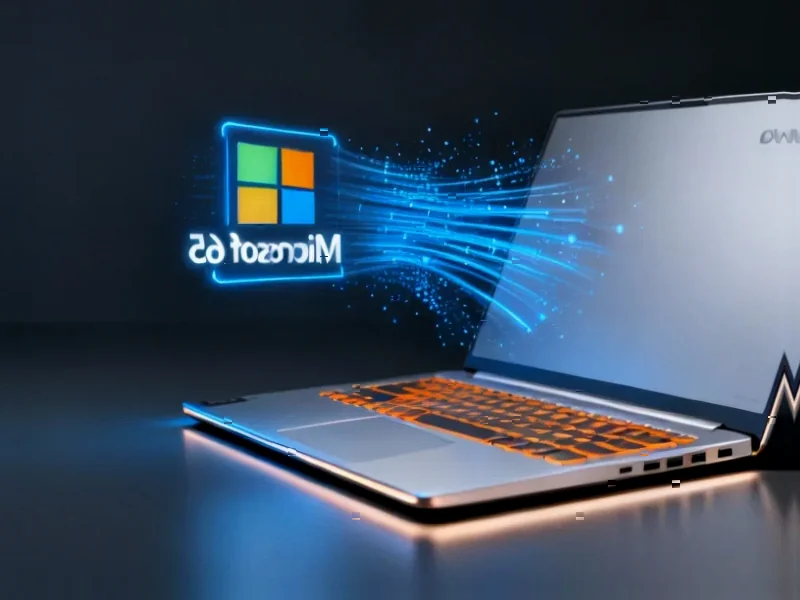Major Start Menu Redesign
Microsoft is reportedly implementing a substantial overhaul of the Windows 11 Start menu in its latest update, currently available to Windows Insiders. According to sources familiar with the development, the redesign aims to address user complaints about the current menu’s limitations and improve overall accessibility.
Table of Contents
The update introduces several key changes to how users interact with their applications. Analysts suggest the most noticeable improvement is the integration of the “All apps” section directly onto the main Start menu page, eliminating the need to navigate to a separate screen. This section is now scrollable, allowing users to browse their entire application library without additional clicks.
Enhanced Viewing Options and Customization
The new Start menu reportedly offers greater flexibility in how applications are displayed. Users can now switch between category view and grid view, according to Microsoft’s announcement. Category view organizes applications into folders based on type, while grid view presents them alphabetically with improved horizontal spacing for better visibility.
Sources indicate the menu adapts to different screen sizes, showing more pinned apps, recommended apps, and categories on larger displays. Users can also expand or collapse the Pinned and Recommended sections based on their preferences, providing more control over the interface than previous versions., according to industry reports
Phone Integration and Personalization Features
A new Phone Link pane within the Start menu enables access to calls and messages from connected iPhones or Android devices. Reports state that users who don’t require this functionality can easily hide the pane to streamline their menu layout.
Microsoft has also addressed user folder naming during setup, according to the latest insider builds. While the process for naming default user folders remains somewhat cumbersome, requiring manual command input, the option now exists where previously Windows automatically assigned folder names based on usernames.
File Explorer and Taskbar Improvements
Beyond the Start menu, File Explorer receives significant updates in this release. The Home page now displays recommended files for both Microsoft accounts and local accounts, showing frequently used files, recent downloads, or items added to the File Explorer Gallery. Sources indicate this feature can be disabled for users who prefer not to see recommendations.
Hovering over files in File Explorer now reveals additional commands including “Open file location” and “Ask Copilot.” Initially available only with personal Microsoft accounts, this functionality is expected to expand to work and school accounts in future updates.
The Windows taskbar also sees refinements, with the battery icon in the System Tray now displaying different colors to indicate charging status. A green icon signifies charging mode, while yellow indicates battery levels at 20% or below. Users can enable an option to display their exact battery percentage in the System Tray.
Additional Features and Copilot Integration
Microsoft has enhanced Copilot integration throughout the system, according to reports. Hovering over open application icons on the taskbar displays a new “Share with Copilot” button that triggers Copilot Vision, which can analyze and answer questions about file content. This feature can be disabled through taskbar settings for users who prefer not to use it.
The update also includes tweaks to the Click to Do option on Copilot+PCs, Windows voice access, and Microsoft 365 Copilot, along with various bug fixes for different Windows features. While Microsoft has made it more challenging to choose local accounts during Windows 11 setup, the addition of user folder naming provides some offsetting flexibility.
Industry observers note that while these changes may not satisfy all critics of the Windows 11 interface, they represent meaningful steps toward addressing user feedback about the operating system’s navigation and customization limitations. The updates are currently rolling out gradually to Windows Insiders, with broader availability expected in future releases.
Related Articles You May Find Interesting
- Forbes Editor Iain Martin Recognized for Tech Industry Coverage and Leadership P
- NordVPN Introduces DNS-Based Adult Content Filter Amid Age Verification Concerns
- Mullvad VPN Expands QUIC Obfuscation to Mobile Platforms to Combat Censorship
- Saudi Arabia Shifts Investment Focus from Neom Megaproject to AI and Technology
- Lakestar Halts New Venture Fundraising, Shifts Focus to Existing Portfolio
References
- https://blogs.windows.com/…/
- http://en.wikipedia.org/wiki/Windows_11
- http://en.wikipedia.org/wiki/File_Explorer
- http://en.wikipedia.org/wiki/Start_menu
- http://en.wikipedia.org/wiki/Microsoft
- http://en.wikipedia.org/wiki/Personal_computer
This article aggregates information from publicly available sources. All trademarks and copyrights belong to their respective owners.
Note: Featured image is for illustrative purposes only and does not represent any specific product, service, or entity mentioned in this article.



